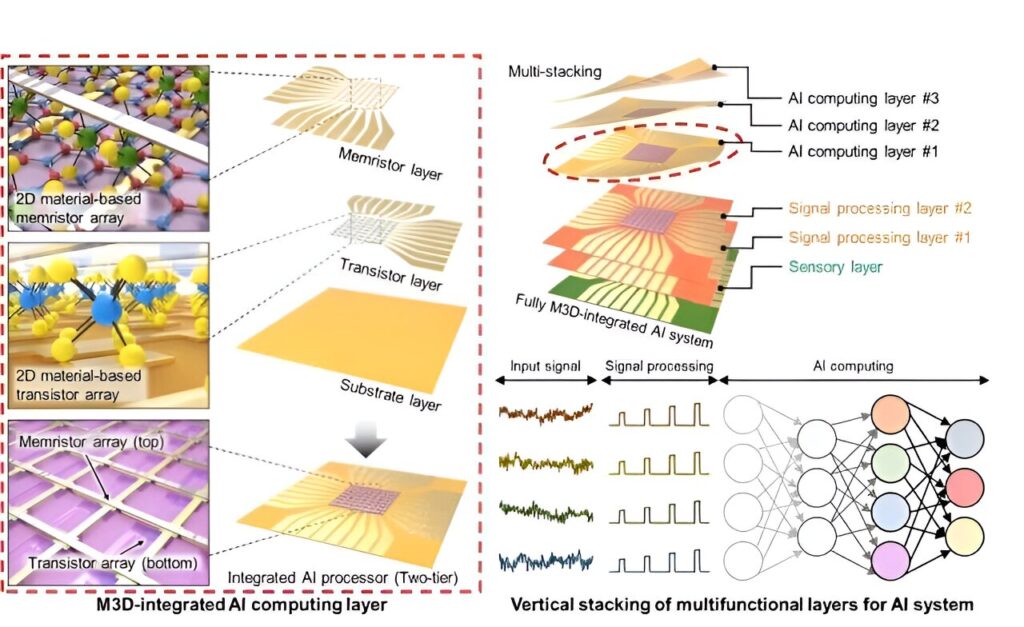Electrostatic capacitors play a crucial role in modern electronics. They enable ultrafast charging and discharging, providing energy storage and power for devices ranging from smartphones, laptops and routers to medical devices, automotive electronics and industrial equipment. However, the ferroelectric materials used in capacitors have significant energy loss due to their material properties, making it difficult to provide high energy storage capability.
Sang-Hoon Bae, assistant professor of mechanical engineering and materials science in the McKelvey School of Engineering at Washington University in St. Louis, has addressed this long-standing challenge in deploying ferroelectric materials for energy storage applications.
In a study published April 18 in Science, Bae and his collaborators, including Rohan Mishra, associate professor of mechanical engineering & materials science, and Chuan Wang, associate professor of electrical & systems engineering, both at WashU, and Frances Ross, the TDK Professor in Materials Science and Engineering at MIT, introduced an approach to control the relaxation time—an internal material property that describes how long it takes for charge to dissipate or decay—of ferroelectric capacitors using 2D materials.
Working with Bae, doctoral student Justin S. Kim and postdoctoral researcher Sangmoon Han developed novel 2D/3D/2D heterostructures that can minimize energy loss while preserving the advantageous material properties of ferroelectric 3D materials.
Their approach sandwiches 2D and 3D materials in atomically thin layers with carefully engineered chemical and nonchemical bonds between each layer. A very thin 3D core is inserted between two outer 2D layers to create a stack only about 30 nanometers thick. That’s about one-tenth the size of an average virus particle.
“We created a new structure based on the innovations we’ve already made in my lab involving 2D materials,” Bae said. “Initially, we weren’t focused on energy storage, but during our exploration of material properties, we found a new physical phenomenon that we realized could be applied to energy storage, and that was both very interesting and potentially much more useful.”
The 2D/3D/2D heterostructures are finely crafted to sit in the sweet spot between conductivity and nonconductivity where semiconducting materials have optimal electric properties for energy storage. With this design, Bae and his collaborators reported an energy density up to 19 times higher than commercially available ferroelectric capacitors, and they achieved an efficiency over 90%, which is also unprecedented.
“We found that dielectric relaxation time can be modulated or induced by a very small gap in the material structure,” Bae explained. “That new physical phenomenon is something we hadn’t seen before. It enables us to manipulate dielectric material in such a way that it doesn’t polarize and lose charge capability.”
As the world grapples with the imperative of transitioning toward next-generation electronics components, Bae’s novel heterostructure material paves the way for high-performance electronic devices, encompassing high-power electronics, high-frequency wireless communication systems, and integrated circuit chips. These advancements are particularly crucial in sectors requiring robust power management solutions, such as electric vehicles and infrastructure development.
“Fundamentally, this structure we’ve developed is a novel electronic material,” Bae said.
“We’re not yet 100% optimal, but already we’re outperforming what other labs are doing. Our next steps will be to make this material structure even better, so we can meet the need for ultrafast charging and discharging and very high energy densities in capacitors. We must be able to do that without losing storage capacity over repeated charges to see this material used broadly in large electronics, like electric vehicles, and other developing green technologies.”


